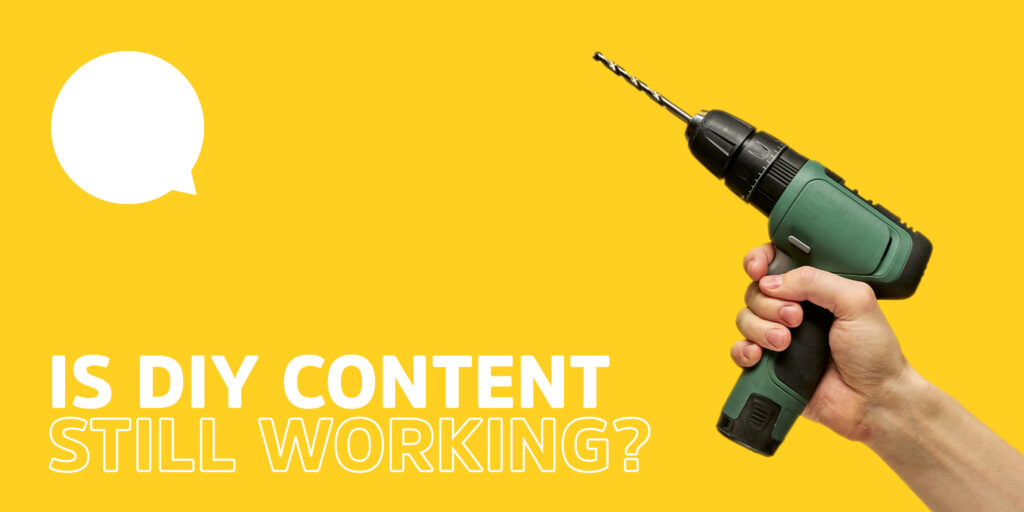Is DIY Content Still Working?
21st November 2022
After many years of our managers, peers, colleagues and various social media and digital advocates banging into us that we need to be producing and posting content consistently, we’ve got very creative at creating DIY content.
From the consistently clever Aldi hopping on trends, and memes and constantly stirring up beef with rival supermarkets, to influencers like Joe Wicks filming his ever-popular workouts, watched by millions, in his living room on an iPhone, we’re used to flipping the camera around and doing our thing to the world.

But is DIY content still working?
With Gen Z and eventually Gen Alpha well beyond the mild embarrassment and awkwardness of talking to camera, and everyone else more than happy to snap fun videos, filtered photos and various other fleeting trends, the market for low-budget, low-effort and sometimes low-quality social media may seem saturated. Like, soaking wet, bath overflowing, house-completely-flooded-saturated.
And the problem with saturated channels is that it becomes really hard to stand out from the crowd.
Full circle social media
In the early twenty-teens, when social media advertising was still finding its feet, it wasn’t uncommon for brands to post a link to their website, their latest TV advert, or if you were lucky, a few products.
By the end of the decade, memes, office videos and photos of the Christmas party that would have been lambasted as completely off-brand a decade earlier are splattered across all channels, with emojis, stories and hashtags replacing any semblance of carefully created copy.
And with everyone doing the same thing, and copying each other’s witty meme-ing and shitposting, we’re coming full circle again to the point where social media advertising is regaining its slick, heavily-produced feel to cut through the noise and try and build brand traction that isn’t reliant from John in accounts doing some sort of cringe-worthy piece to camera about how they’ve made lots of savings – nobody cares John!
But it certainly isn’t the end of DIY content. DIY content is, like every other chunk of social media real estate, just evolving again.
Got Instagram and Tik Tok? How easy is it to lose hours of your day watching 15-30 second snippets of supercars, baked goods, dogs swimming, kids being cute, or whatever else gives us that little hit of dopamine that powers that upward swipe of the thumb and an extra half an hour on the couch.
And guess what?
Those features have been designed specifically to give DIY content an elevated platform, the short-form TV that we’ve already bought into thanks to YouTube et al. If anything, social media platforms are encouraging us to keep on shooting using what we have to hand, and ensuring fun, engaging content that users will rewatch, share and possibly even subscribe to is shown first.
Get to the point
So to answer the question in the title of this article, it’s a resounding yes, DIY content still has a critically important seat at the table – it’s just the execution that has changed.
Rather than the same-old selfie/team day snap/product pic uploaded because there’s a gap in the social media calendar, you’re going to have to try a little harder.
Try using some DIY camera tricks (you’ll find loads from HDY right here) to elevate your clips, like changing up your transitions, finding the perfect angle, or timing your video to a music track.
If that sounds too strenuous, then try a compilation of your other videos as a ‘turn back time’ or ‘throwback’, or to celebrate a milestone.
And if you’re feeling really adventurous, look for a trend that’s performing well for other brands and give it your own spin. Harlem Shake re-imagined for the 2020s anyone?
Take a look at our latest work here and see how we do content marketing.

